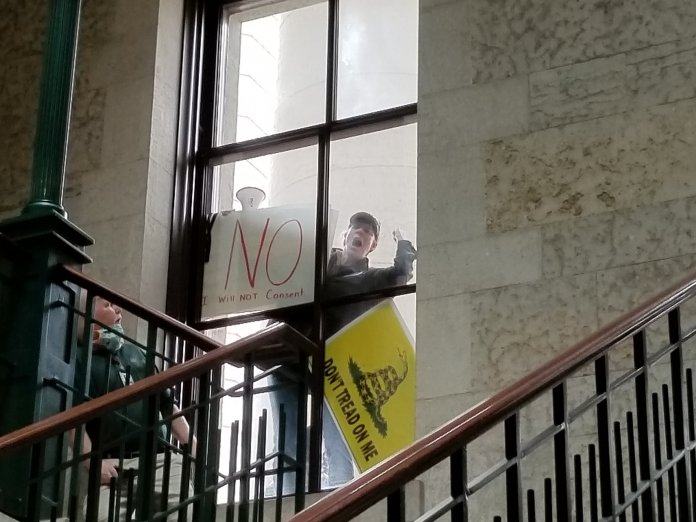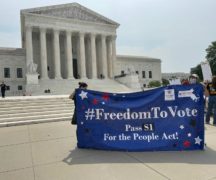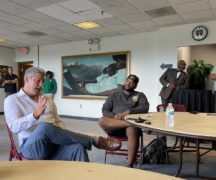Gov. Mike Dewine on Tuesday ordered people to wear masks in the hardest-hit Ohio counties as cases of coronavirus surged across the state. The order mirrors a statewide order issued by DeWine on April 27, only to pull it back a day later.
The 948 new COVID-19 cases reported between Monday and Tuesday was an 18% increase over the rolling, 21-day average of 804, which is itself a 95% increase over the number of cases reported on June 17, the start and the smallest number of the 21-day period.
The numbers of deaths, hospitalizations and ICU admissions due to the disease were up Tuesday over their 21-day averages as well.
Last week, state officials enumerated seven thresholds they would use in determining the alert level of each Ohio county. Those meeting four or five of those thresholds are at Level 3, or “very high” alert under which people are supposed to “limit activities as much as possible.” (Wood County is orange.)
Hamilton, Cuyahoga, Montgomery, Butler, Huron and Trumbull counties are all at Level 3. So is Franklin County, but DeWine said it also appears poised to tip over into a Level 4 county, where people are urged to “only leave home for supplies and services.”
“We continue to have great concern,” DeWine said of the county that is home to the state capital.
The mask orders announced Thursday apply to the seven Level 3 counties. They require people to wear masks in public buildings, on public transportation and in outside settings where they can’t maintain a distance of at least six feet from people not in their families. The orders will remain in place so long as a county is at Level 3, DeWine said.
However, the governor said that county health officials believe much of the spread in the hard-hit counties appears to be happening at family functions such as funerals and birthday parties and the like.
“One health official indicated to me that they’re seeing the same (family) names,” DeWine said.
Since he rescinded a big part of his earlier mask order — and since he began in May to rescind other public health orders — DeWine has preferred to try to persuade Ohioans to wear masks and to maintain social distance to protect themselves. He hoped that would be enough to protect Ohioans and allow the economy to restart.
“A governor has an obligation to lead and a governor has an obligation to bring people along,” DeWine said Tuesday.
DeWine and Lt. Gov. Jon Husted said they don’t want people who work in public spaces to enforce mask requirements; they merely want them to inform customers of them. They apparently don’t want government officials heavily enforcing them, either.
“We are not looking to lock Ohioans up,” DeWine said Tuesday. “That’s not what we’re about, but we have to have the ability to enforce orders.”
At first blush, most Americans seem easily persuadable that mask-wearing is a good idea. Indeed, most think that already.
A Fairleigh Dickinson University poll conducted before the most recent coronavirus surge found that a huge majority of Americans, 79%, support requiring people to wear masks in public places. That includes 63% of those who identified themselves as Republicans.
But for whatever reason, DeWine’s message hasn’t gotten across to an outspoken, influential minority. In early May, there were loud, unmasked demonstrations against the governor’s health orders on the grounds of the state Capitol.
Then Dewine’s fellow Republicans in the Ohio House and Senate passed bills that would decriminalize violations of state health orders such as those to wear masks, which public-health experts now widely believe can check the spread of the coronavirus if sufficient percentages of people follow them.
DeWine said he planned to veto the decriminalization measure, saying allowing it to become law “would be a tragic mistake and I’m not going to allow that to happen.”
But he’s stuck with a resurgent disease that he’d hoped his powers of persuasion would enable Ohioans to avoid. Did the early reopening of the economy and the mixed messages from his fellow Republicans give too many in the state the mistaken idea that the worst was past?
“I suppose that’s possible,” DeWine said. “We tried to be very clear that people needed to continue to be careful — that the virus was still very much among us. In fact, it had spread even more. We made the (reopening) decision because we felt the consequence to Ohioans of being closed down any longer would be just devastating.”





